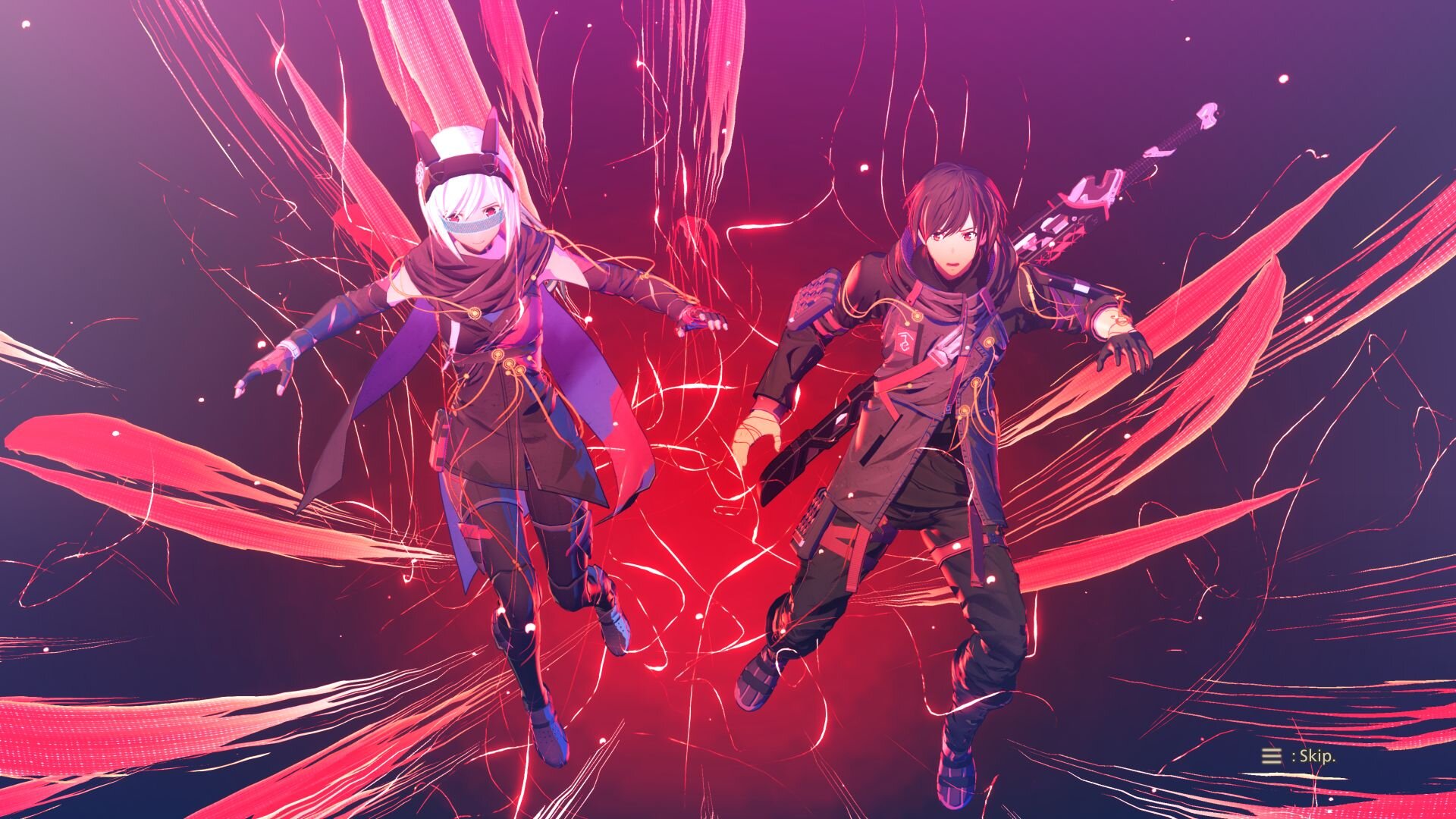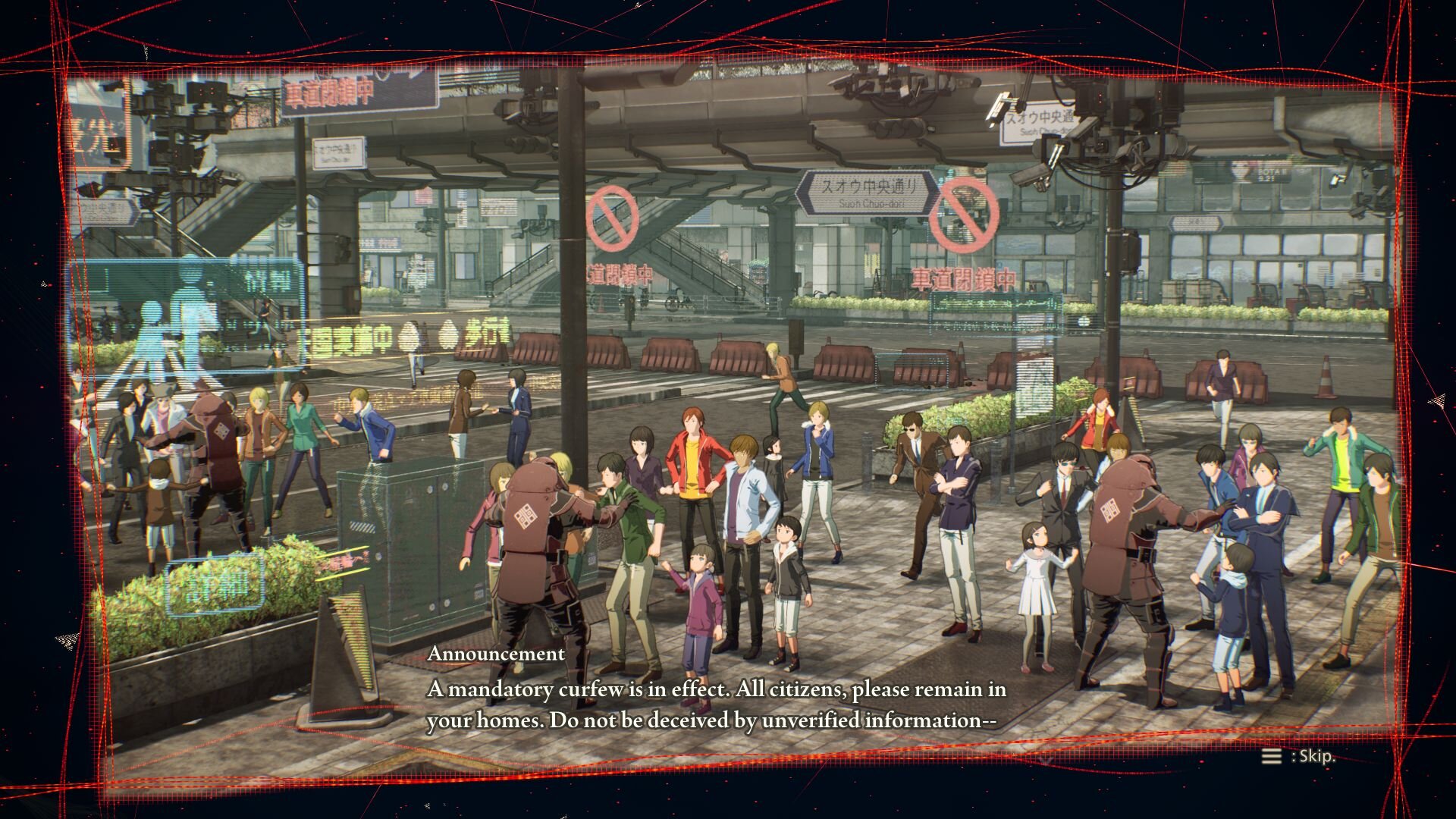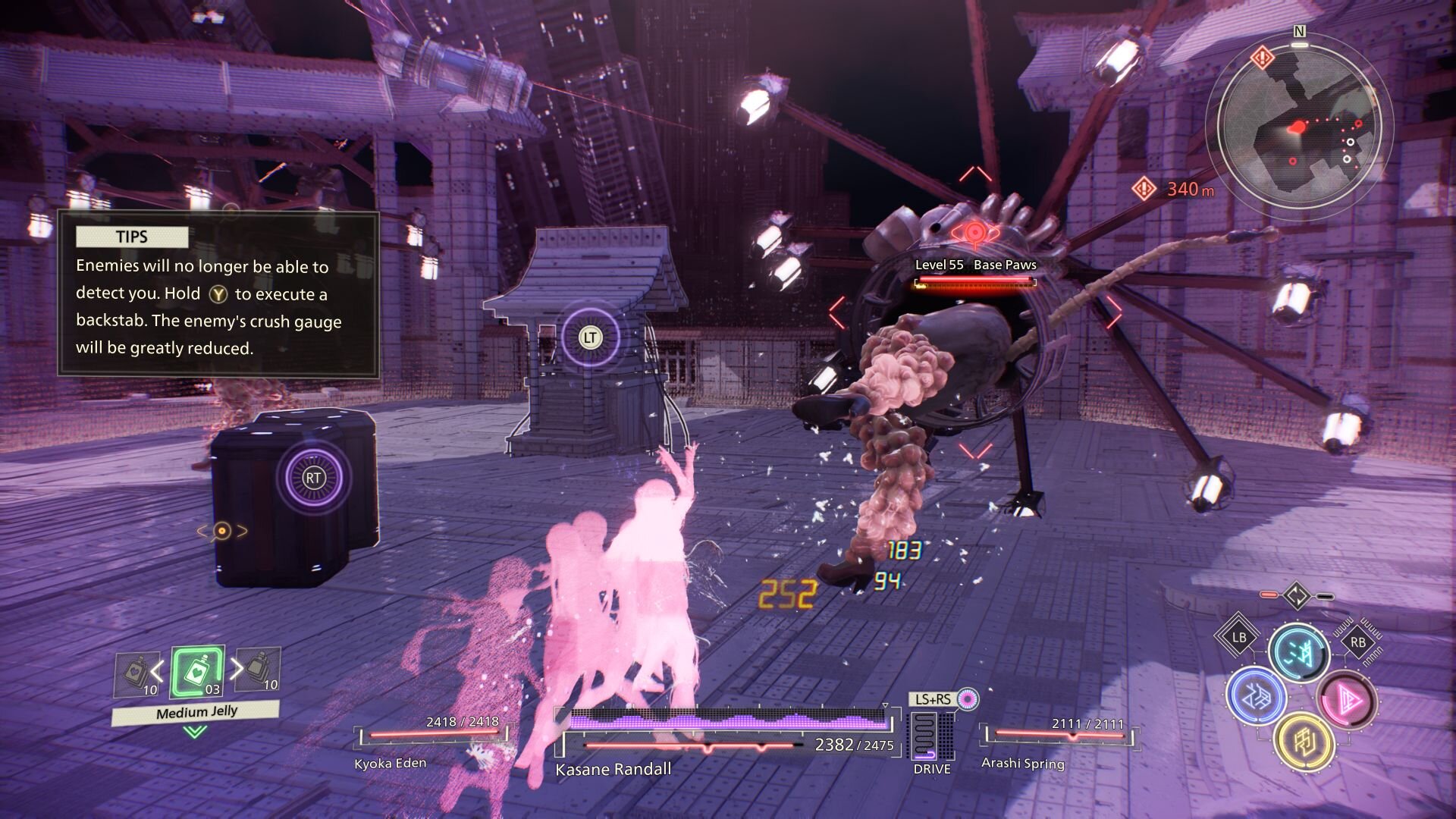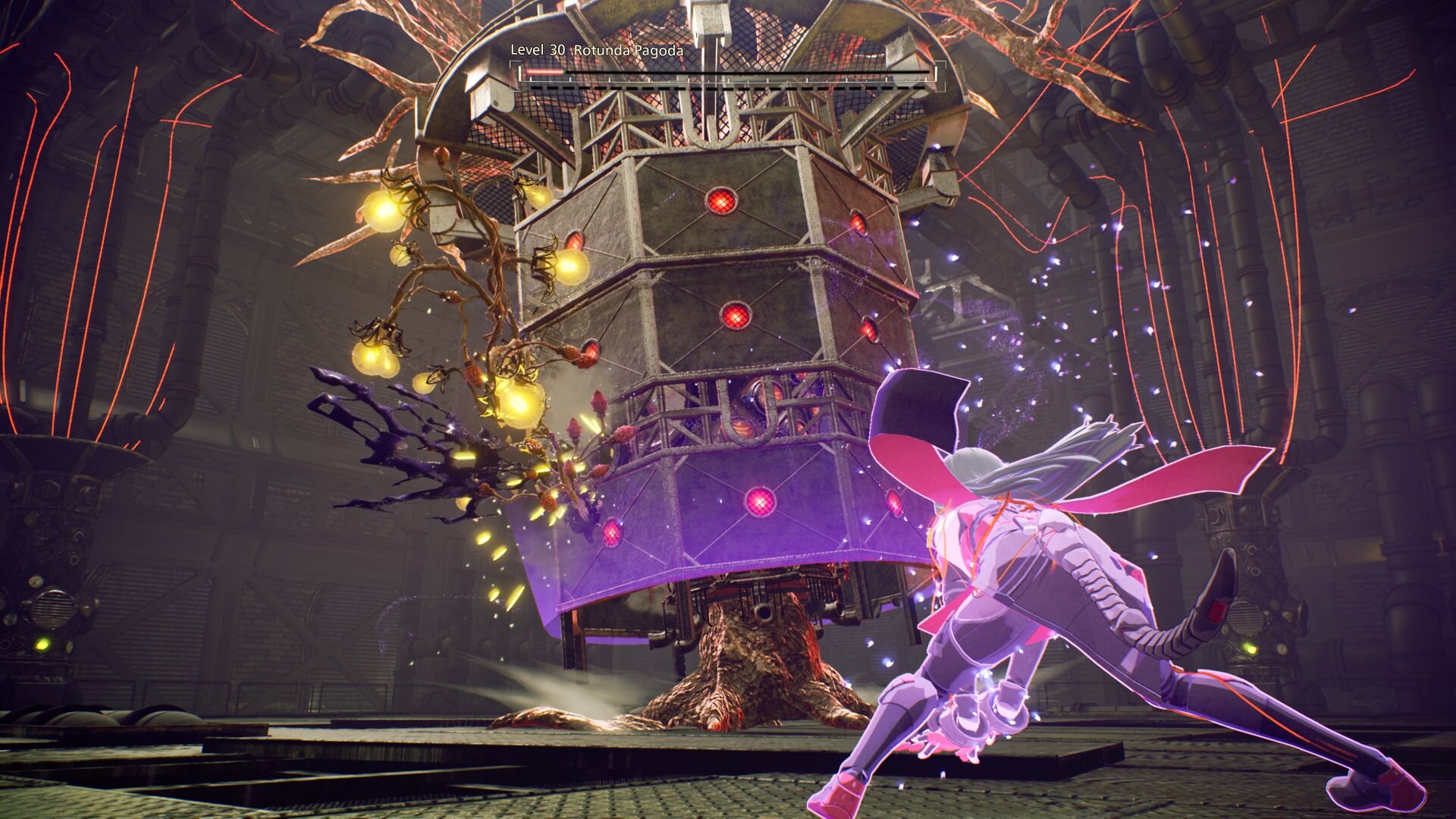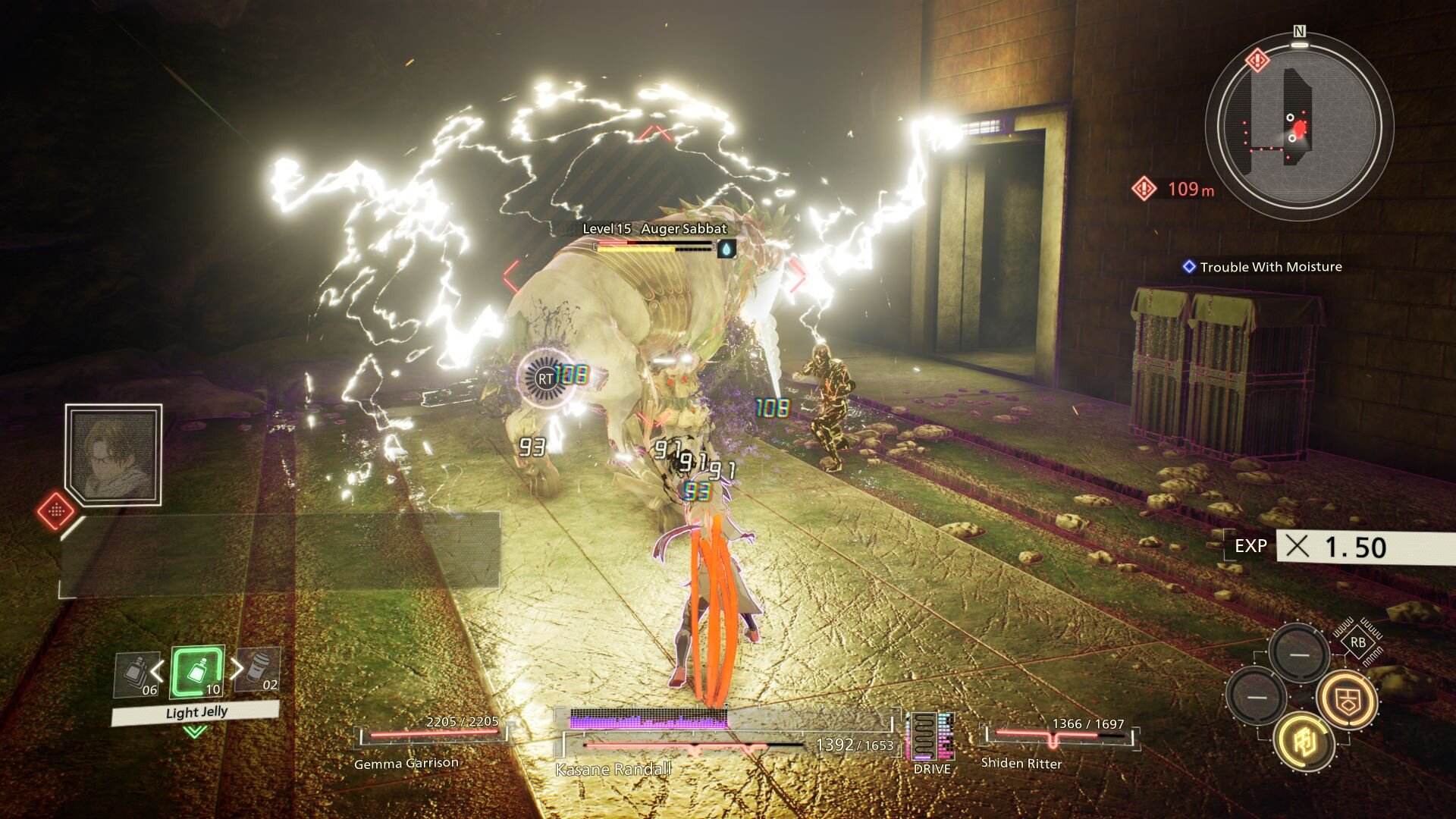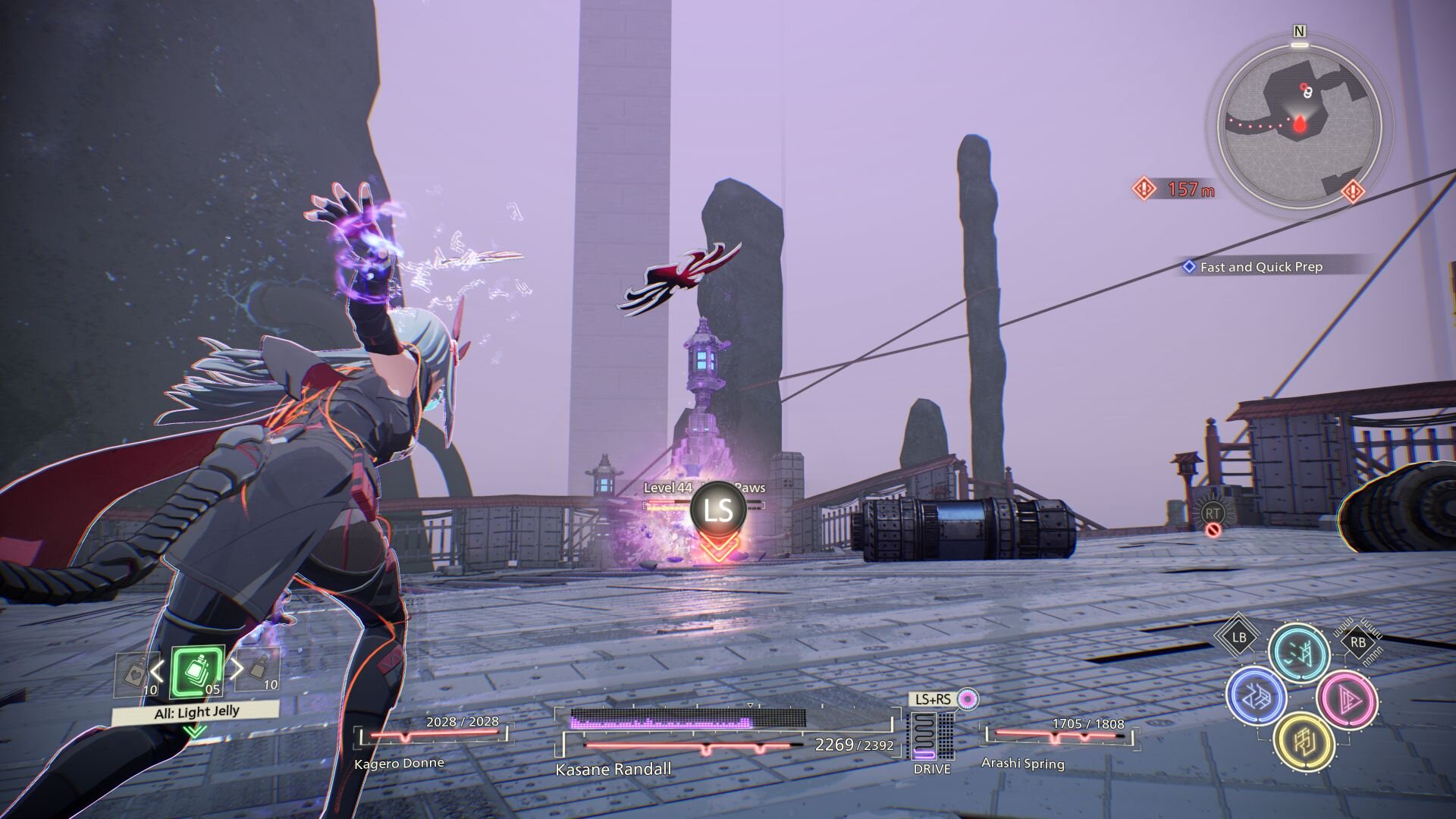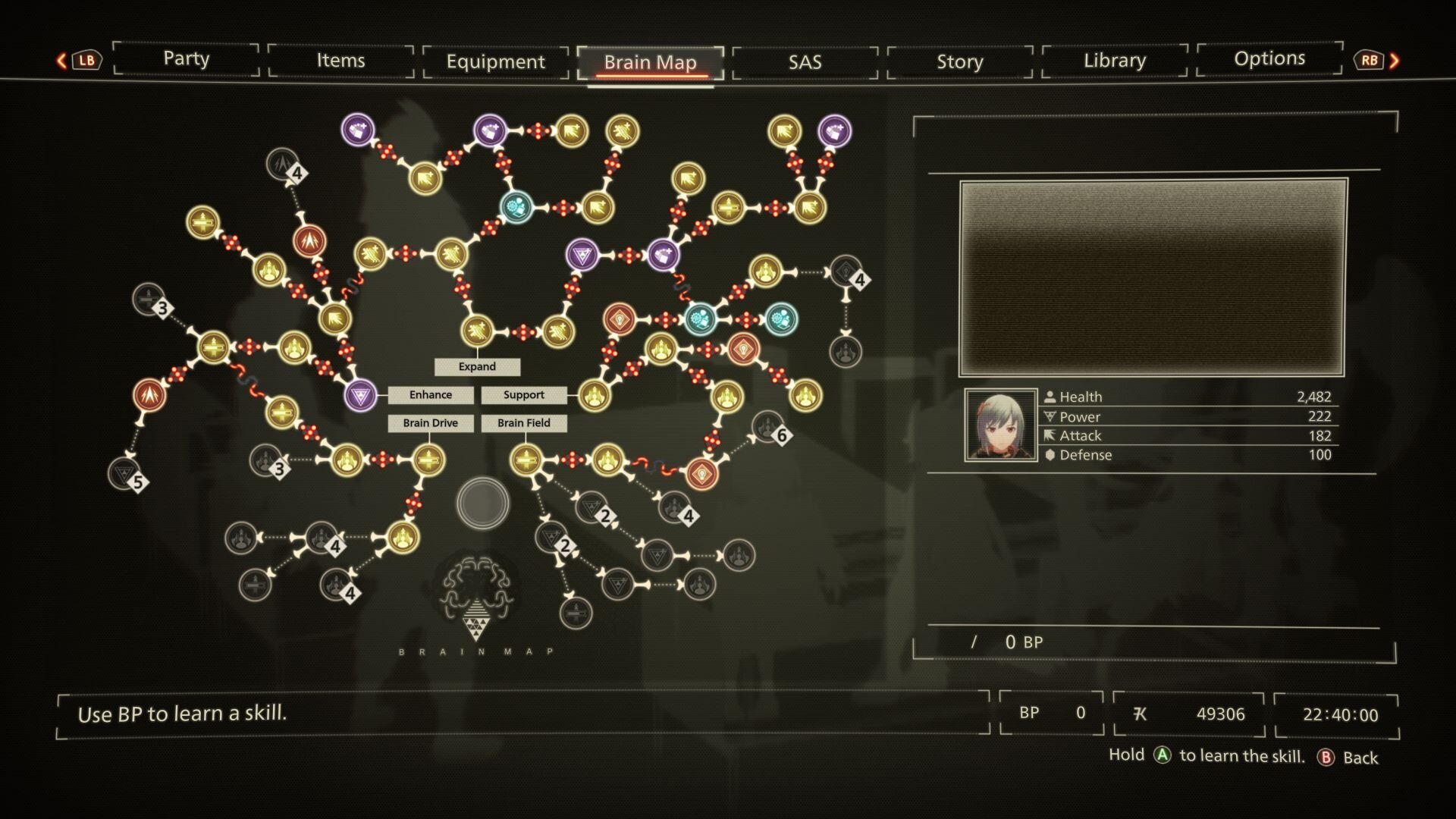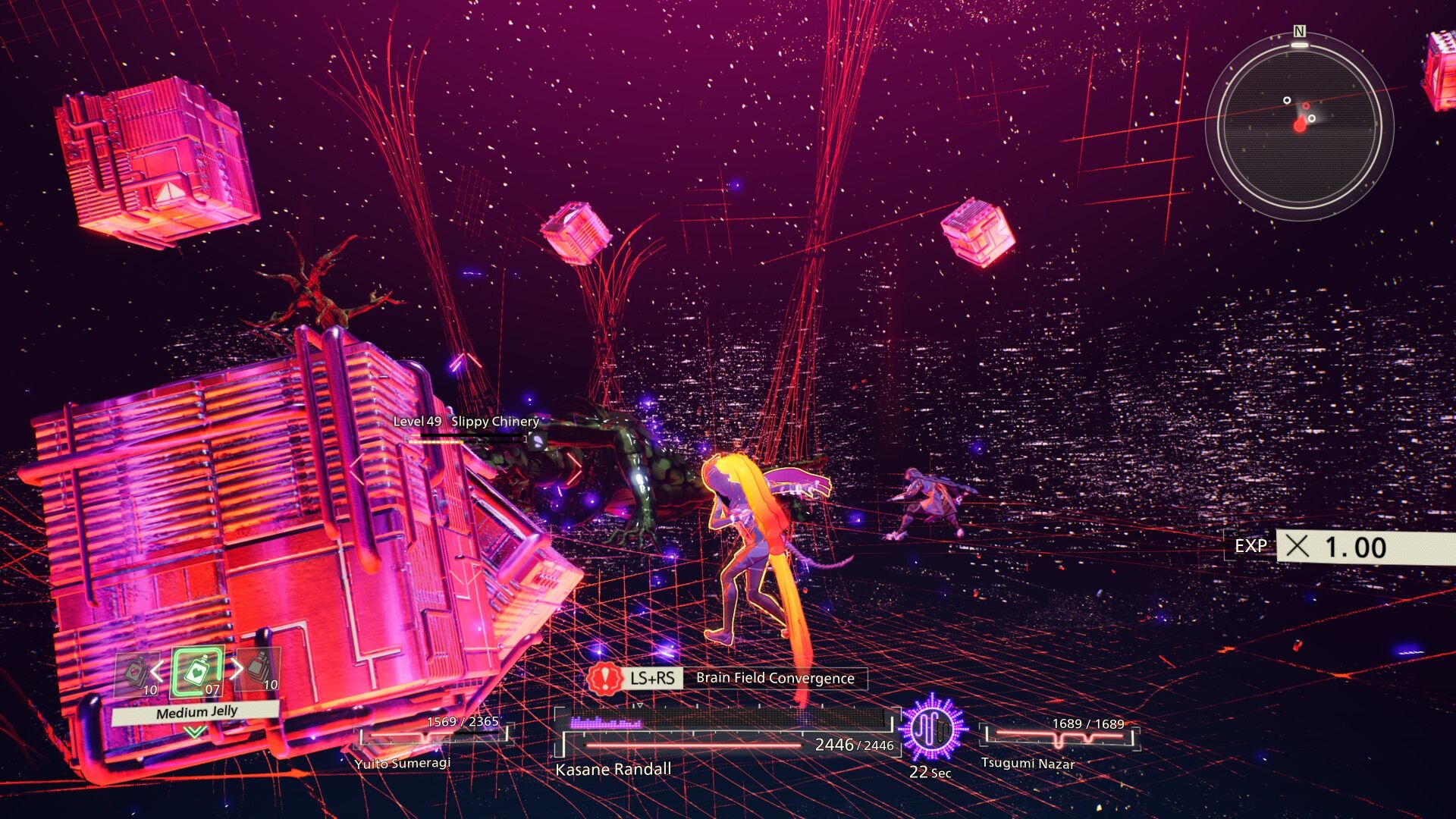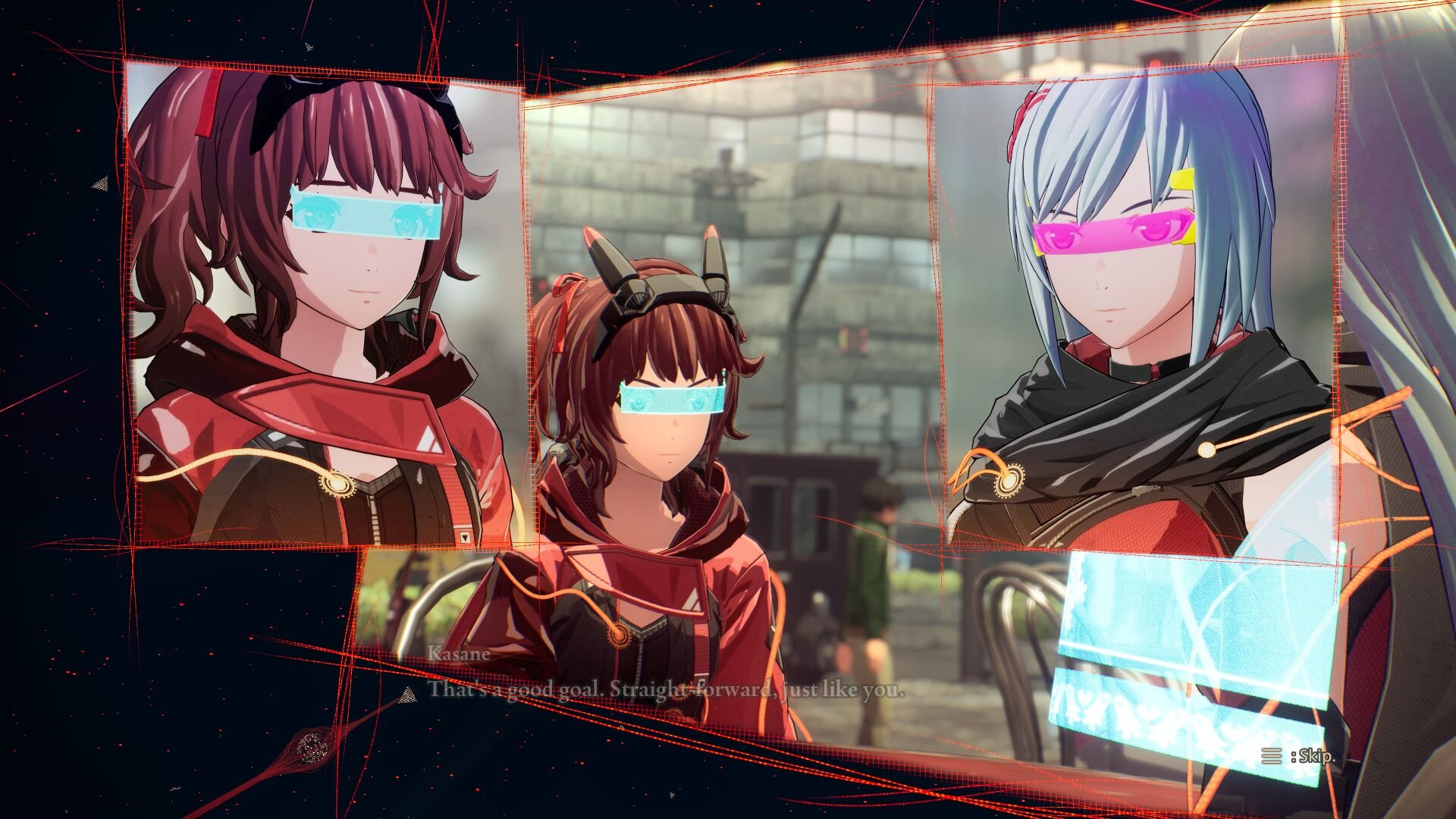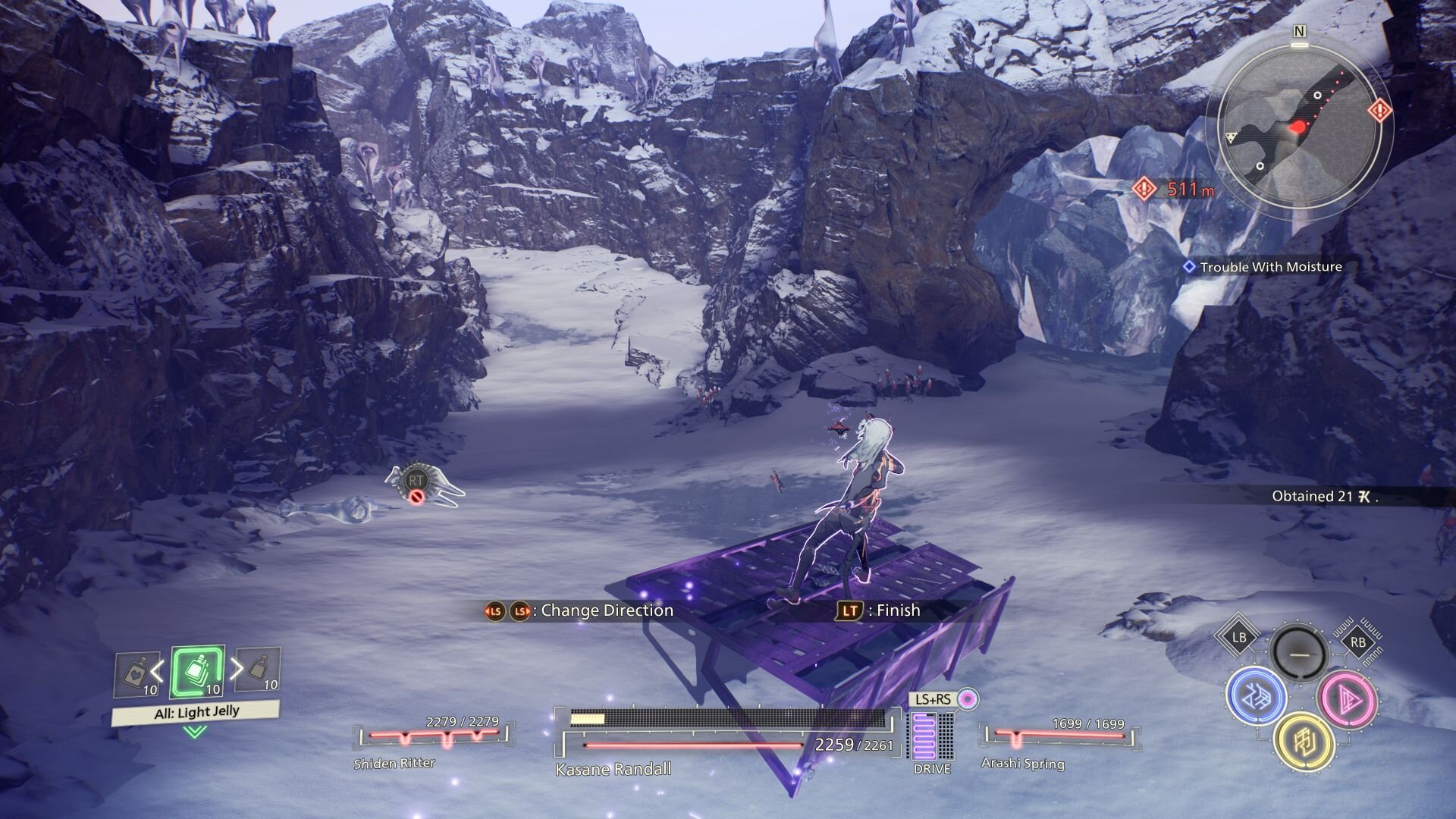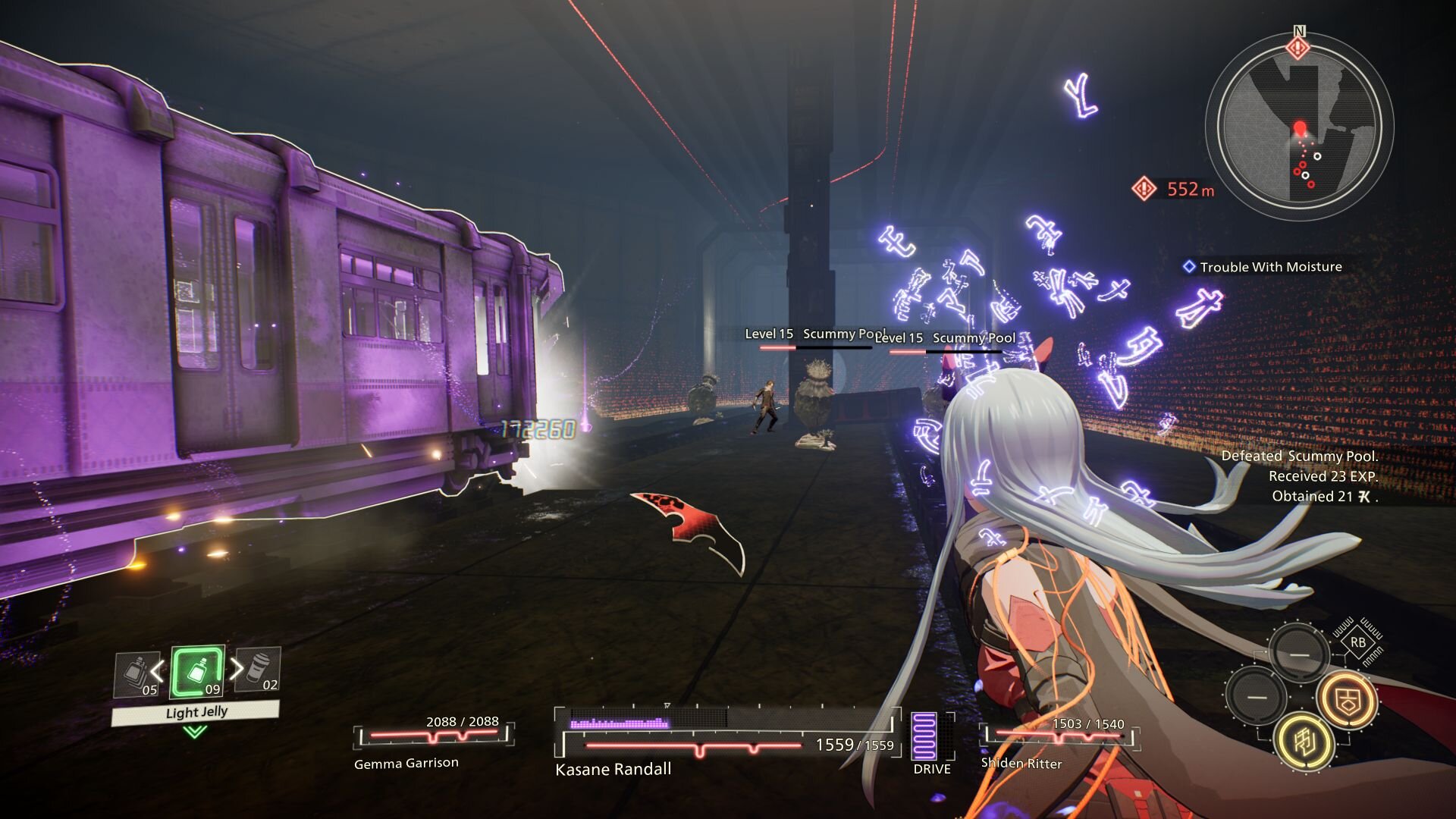A game like no Other.
Scarlet Nexus is a damn good time, regardless of the few issues I have with it. This is the latest JRPG from Bandai Namco Studios, a cyberpunk-ish adventure where you’ll follow a group of enhanced soldiers with fantastical powers as they attempt to defeat a grotesque lot of bizarre-looking creatures while trying to make sense of a devious plot in their midst. There are betrayals, espionage, in-fighting, and more, as you’ll look to discover the truth behind the mystery of the Red Strings; will they spell doom for mankind or be their salvation? Scarlet Nexus is pure anime at its core, complete with a bonkers plot and a richly detailed cast of characters. It also helps that it’s absolutely gorgeous with a deep combat system to match.
What is immediately interesting about Scarlet Nexus is you’re given the choice between two protagonists; Yuito Sumeragi. and Kasane Randall. While the story will remain the same between each character, you’ll be tackling things from a certain perspective. This means that where their paths divert in the story, you’ll play out events from that character only until you start up a new game and see what you missed picking the other. This also means that dialogue and some moments will be more based on the character you’ve chosen, even if it’s the same overall scene between the two leads. While you won’t be able to customize them via any sort of character creator, likely because they’ll need them to visually match up to the upcoming anime, you can customize them with a variety of costume pieces and items.
As for the characters themselves, they couldn’t be more different from one another. Yuito carries a lot of weight on his shoulders due to his family name. His ancestor was one of the founding fathers of New Himuka, the game’s central city, with his current family essentially being in charge of the government. In fact, even the OSF, which is the detachment of soldiers he has enlisted for is run by his very own brother. To say that Yuito lives in their shadow is a huge understatement. Yuito joined the OSF because of his life being saved by a mysterious OSF soldier when he was little and thus training hard to the very day he joined up, hoping to one day be as brave as they were. Yuito is a kind and compassionate young man, eager to help, and conditioned to respect and look out for others.
Kasane, on the other hand, lost her mother at a young age and was taken in by the Randall family, who just so happens to control the biggest military corporation in New Himuka. Because she was never their true daughter, she was rarely shown the love and support she needed from them, and instead, formed a bond with their daughter Naomi who would replace them as that loving support she needed. This causes the pair to eventually enlist as soldiers for the OSF, joining up and looking to have each other’s backs. Kasane is socially distant, awkwardly unaware of how to engage with others, and is overly blunt, despite not knowing it. She is not used to interacting with others and lives in what is essentially a socially restrictive bubble.
The world that inhabits Scarlet Nexus is one that you’ll learn a great deal about its true history, the events that led to its current state, are how certain events may shape its future. Essentially, we are told that a long time ago, creatures known as “Others” started to show up and pray upon the brains of humanity. This led to the discovery of a psionic hormone in the human brain, one that would eventually grant humanity extra-sensory gifts that would aid in their battle against these creatures. As humanity would develop these powers, they would bleed into a variety of abilities, and for a time, it felt like humanity was ready to win this fight.
This would eventually lead to the foundation of the OSF, the Other Suppression Force, which has since been around for hundreds of years and would become humanity’s last line of defense. While much of mankind was granted some aspects of power, only those with extraordinary gifts would be able to combat these Others. However; not every person is granted powers, and these “duds” as they are called, are incapable of any assistance and are often shunned by society. Having powers doesn’t essentially mean you are capable of combat, but it does allow you to connect to a network, meaning you’ll be able to see the holographic signs that are everywhere and have some contribution to society. While the game doesn’t deep dive into this social tier system as much as it could have, it does touch upon it in some significant ways regardless.
For the hundreds of years that the OSF and humanity have been fighting the Others, it seems to be an endless fight due to the otherworldly phenomenon known as the Extinction Belt. This supernatural haze that floods the sky is where the Others come from, and contact with it is impossible to survive. This has led to hundreds of years of encounters that never seem to end, As the OSF has discovered, the psionic powers are much stronger when its members are young, so they implement anti-aging drugs to suppress their own growth, keeping them as powerful as possible for as long as the host will hold out. However; this is also something that is not really touched upon as much as it should be as once you know, certain characters start to make a whole lot more sense as to why they look so young.
While some of your adventures take place in and around New Himuka, defending it as a member of the OSF, there are other cities, other factions, that all have various takes on the Others, and most importantly, the Extinction Belt, and how and where it came from. A great deal of the story ties into these other locations, and while there are a great number of places to visit, you’ll often come back to some locations just far too often, making them lose their appeal greatly. In fact, most of the starting areas away from the city are those you’ll revisit the most. Whether it’s in part to some character-specific missions or whathaveyou, I eventually started to sigh out of frustration at the number of times I would have to go back to the same location again and again. Honestly, this reuse of areas is the real issue I have with Scarlet Nexus, and the consistency to which you revisit these locations is an issue that started to greatly affect my time with it. Had these areas eventually opened up new avenues to explore, akin to maybe something like a Metroidvania, albeit, without the need of equipment to unlock new additions, I wouldn’t mind as much, but there are some locations you’ll trek back to almost a dozen times.
Now, while that is the setup of the world, and what you’ll come to expect, you won’t find out everything just as one character. Granted, there are moments where you’ll learn or share some of that information through the other protagonist, especially that of the Red Strings, but you’ll have to play through the game a second time with the other character to grasp some of the context of what is going on. While there is a bulk of the game that is largely the same, regardless of your chosen hero, there is a solid amount here that does have content exclusive to each playthrough. Eventually, events start to play out that have you questioning your allegiances and even your allies, as well as a key moment in Kasane’s campaign surrounding the Red Strings that has drastic consequences for the world itself.
While some parts of the story are not as well explained as others, it’s one of the few JRPG’s where I can honestly say I grasped the complete story in ways where I really enjoyed it. This is largely in part to the wonderful cast of characters you’ll be introduced to and the presentation of the story itself as several of the game’s cinematics will swap between those that use the game’s character models, as well as motion comic like stills that bounce and shake depending on the action. At first, I found these to be somewhat lazy, but once they started to have them react to certain actions, I was all there for it. In fact, some scenes I think really shine because of that format, giving them an odd intensity, despite their flat nature.
While you may not have access to each and every member of the team consistently throughout the story, you’ll be able to have moments getting to know them, learning about their hobbies, their likes and dislikes, and who they are as people. You’ll do this during bonding episodes between chapters at your home base, that then have you out and about on a coffee date, or helping them with a favor. You’ll also give them gifts that boost their relationship with you, and those gifts will be on display in that character’s bit of space at the hideout. While there isn’t a full-blown romance system, leveling up their friendship does make them more compatible in battle with you, boosting their abilities and changing aspects of how their powers work. It’s also great that pretty much everything is voiced, and frankly, every single actor here absolutely nails their character to a T.
I have to say, I don’t know of a single member of the main cast that I didn’t enjoy talking to or having as part of my party. Now, some members of the cast are placed alongside each of the protagonists, so you’ll have some limited time with many of them. While some of them fall into certain stereotypes, many of them see some significant story development that allows them to grow. A few of my favorites were Shiden and Arashi, who are each selfish in their own ways, with Shiden feeling like he should be in charge due to his ego, and Arashi being content with being lazy and yet heavily invested in what she likes. Her take on growing as a person in relation to a software update was something I vastly enjoyed. Then there is the timid Tsugumi Nazar who is an absolute delight and incredibly adorable in every scene. She has a passion for growing plants, and uses her Clairvoyance power to even aid in growing them, and understanding their needs as a living thing.
Now, while each character has a power all their own, Kasane and Yuito are able to borrow those powers in combat, even if they are not in your main party. This makes the formation of your party not as important as other JPRG’s and allows you to pull from your benched characters whenever you want as if they were there. As a member of the OSF, you are essentially tied into a network that is capable of pushing powers onto others temporarily, although, some members of the OSF are able to fully transfer powers and use them without the host’s permission, something that plays heavily into the story. While again, you won’t have access to a character’s power unless they are in your party reserves, but you will almost always have at least a few characters present to pull from, unless the story demands it.
Kasane and Yuito both have the same Psychokinesis power, but their combat styles are incredibly different from one another. Kasane uses a series of small blades that she whips around, similar to something like God of War, but not as flashy in their use as a crowd control weapon. You’ll get different weapons for each of the cast going forward, but they all serve the same overall purpose and only change in aesthetics and stats. Yuito wields a Katana and does feel very different to use than Kasane, which greatly benefits the second time through. Now, their Psychokinesis power allows them to lift and throw objects, even while locked in combat. There can be a bit of a dash backwards when you use your powers in certain ways, but more or less you are able to multitask while you pick out light objects with RT and chuck them violently at your foe. LT, on the other hand, allows you to throw and interact with heavier objects or even trains and other objects you can ride, such as platforms or a bus. These are often presented with button prompts like slamming down an object with RT or pressing B as fast as you can as it pummels an Other into the ground.
There are a variety of attacks, combos, and jump attacks that you’ll unlock as you progress through the skill tree, or you can keep things simple and put your points towards something else. The skill tree has a few paths to take to carve out your progress; Expand, Enhance, Support, and the two other systems you’ll look to master in Brain Field, and Brain Drive. Each path looks to enhance certain fields of your powers and abilities, even if there are some unlocks that feel placed to limit your character from becoming too powerful too fast. The upgrades in the three initial paths all range from performing certain combo attacks, jumping strikes, controlling cooldowns and gauges, to being able to wield multiple powers at once, such as combining invisibility with being able to slow down time, and electrocuting them during the same onslaught.
Combat is incredibly fast, allowing you to dash and jump all over the battlefield, swapping to different abilities as you charge up your own meter to unleash your powerful Psychokinesis attacks. The other powers that you’ll have access to are Hypervelocity, Duplication, Electrokinesis, Invisibility, Clairvoyance, Teleportation, Sclerosis, Pyrokinesis, and a double dose of Psychokinesis, should you have the other protagonist in your group. Now, some of these are self-explanatory, like Teleportation, or Invisibility, but even then, some of those are used in some interesting ways, and often, some enemies require you to either be super fast or invisible to even attack them. Others, are, however, less known, such as Sclerosis, which acts like a shield that allows you to soak some hits. Duplication is a skill I often had up as it can duplicate all my thrown projectiles, giving me twice the damage output. Finding all sorts of combinations to succeed in battle is extremely fun here and many of the powers come with special attacks and team-up strikes that you’ll unlock as you level up your bonds between characters.
Despite the repetitive nature of its environments and even its continued use of a lot of the same enemies, combat never once felt dull. I would consistently try out new combinations, and the game is smart in making some powers crucial during several different encounters. The game also has a magnitude of finisher attacks that look incredibly flashy as you break down enemies and make them vulnerable. Honestly, some of these finishers are custom to the enemy as you would swing around them, pulling at parts of them, and then choking the life out of them, or throwing them into the sky and watching them explode. I will say that at some point around the 15-ish hour mark, you start to see pretty much every enemy type and some encounters simply translate into filling the room with as many of its high HP foes as possible, making it feel like the game is out of ideas when it comes to its monster arrangement. You will see several more show up after a while, but there are long droughts throughout the game where the enemy variety could have been spiced up a bit.
Also, the final location before you start approaching the final boss is a slog of battles that feels like how most games have those tower challenges, pitting you against everything you’ve encountered throughout the game, just back to back as part of some sort of challenge gauntlet. I enjoyed the idea of how the level is constructed and the reason for it, but it simply felt like filler in a lot of ways as they would dump multiple of the hardest enemy types in a room and just keep laying it on. That aside, this is one of the few games recently where the final encounter was incredibly satisfying in its mechanics and pacing. I found that so much of my confidence in using everyone’s abilities to be on display here, as the game smartly uses my abilities at different points and makes you really fight as a team.
Lastly are two systems that you’ll use quite frequently during tougher challenges and one that will activate on its own once you fill up a meter. The first is Brain Drive, and this function is both interesting and yet executed rather poorly. As you battle, you’ll fill up the Brain Drive gauge, and once it fills, it will automatically consume it and transform your character slightly, granting them considerably more damage output and combo ability. I’ve had this move activate at the end of a battle and since it has a timer attached to it, I’ve seen it go to waste more often than it was useful. Then we have Brain Field, a power that pulls you and your foes into an almost cyber dimension that can harm you if you stay in there too long. Here, you can do massive damage, and is perfect when you are in a boss encounter or against a group of rather hard enemies that get piled into the room together.
While you’ll have access to a few outfits if you have the various special editions or pre-order bonuses, a lot of your customization comes from costume pieces such as bunny ears, backpacks, or stuffed animal clings that you can attach to your shoulder. Personally, I shot for the more cyberpunk glasses or holographic armbands, or the animal tails and wings, but you’re given access to a tremendous amount of these items to dress your team up in. While you can buy many of these from the traveling shop that is always nearby, many of them are crafted from items you’ll collect all over, and this is true for crafting your armor, equippable perks, and weapons, giving you a lot to work towards as you look to make you and your team more viable in combat. It’s not an overly complex crafting system, and some of the items you gather seem oddly convoluted, but it functions well enough if feeling a bit tacked on.
Now, in regards to side quests, It’s all a miss for me, I’m afraid. Side activities boil down to killing a type of enemy or killing them in a certain way. These don’t evolve or change from this format, and frankly, the rewards for them are always items that I’ve already bought or crafted, so there was never really a drive for me to tackle them. Often, I would leave it up to chance and check back occasionally in the menu to find out that I had four or five ready to hand in. Thankfully, you can just complete them from the menu, as there is no need to trek all over the place to hand them back in to their quest giver.
Scarlet Nexus is often stunning, not just from the immediate visuals, but the way the backgrounds almost become beautiful works of line art as you’ll see them adapt this green haze and stand out with some black lines that almost give it this cell-shaded look. It works so well that often, the backgrounds look like highly detailed blueprints. The characters themselves all look great, and the aesthetic given to them and their world just gives this game a very unique look that works so well. I had a few framerate dips, but the game seemed to almost consistently hit 60fps at 4K, and honestly, I never experienced any hiccups or glitches, or anything, apart from some moments of pop-up in the main city, but usually, these were details far away in the distance.
Bandai Namco has created what could be a very interesting franchise going forward, should this continue. While the game does a good job wrapping up the mystery about the Red Strings, I could see stories coming into play due to how certain storylines wrap up, especially with Kasane. Should they keep with the two protagonists, this would mean plenty of differences due to where each of them ends up. The combat here is insanely cool and I never felt like I was just going through the motions, but the variety in the use of its environments and enemies would need to be something to address due to how often you’ll see the same things over and over again. Still, I adored its characters, its story, and its immensely enjoyable combat. Scarlet Nexus isn’t the greatest JRPG in recent years, but it’s a damn good one that feels fresh and different from what’s come before.
Developer - BANDAI NAMCO Studios, Tose. Publisher - BANDAI NAMCO, Namco Bandai Games America Inc. Released - June 24th, 2021. Available On - Xbox One/Series S/X, PS4/5, Windows. Rated - (T) Alcohol Reference, Blood, Mild Language, Violence.
Platform Reviewed - Xbox Series X. Review Access - Scarlet Nexus was purchased by the reviewer.


